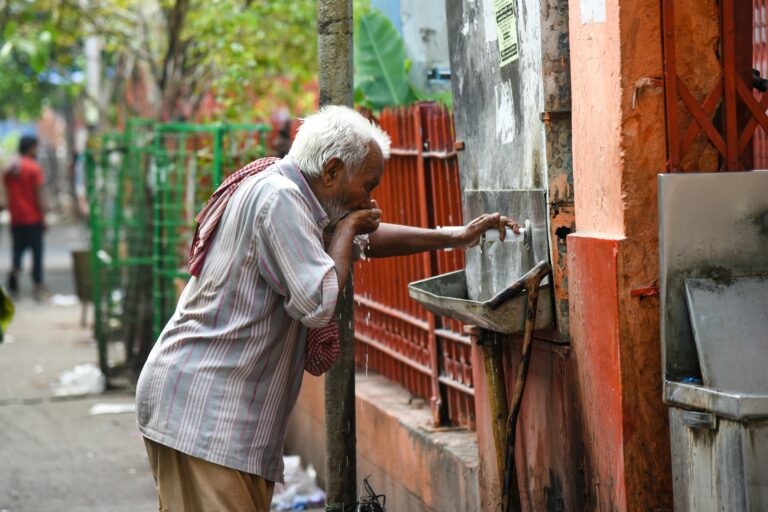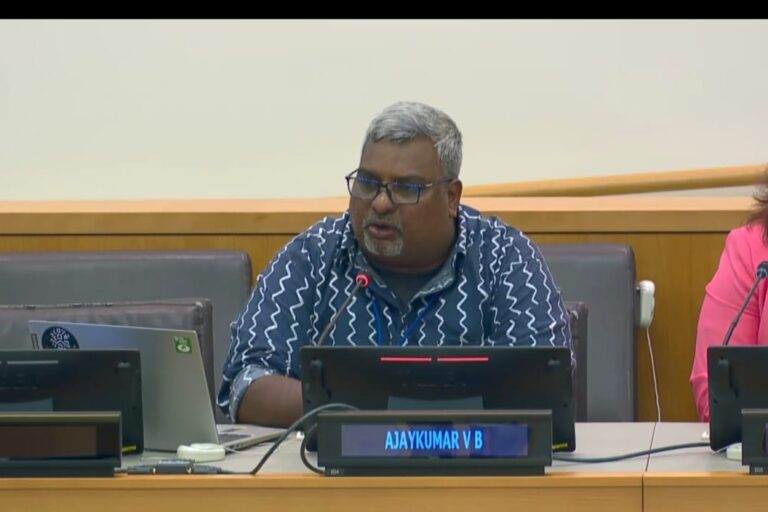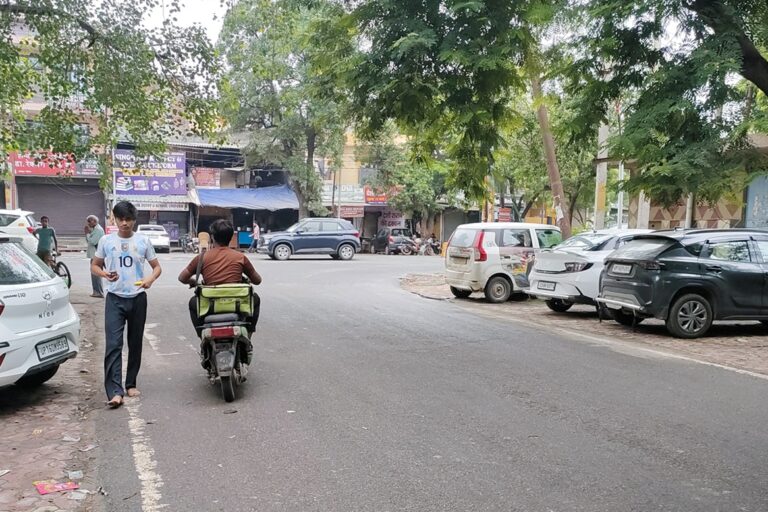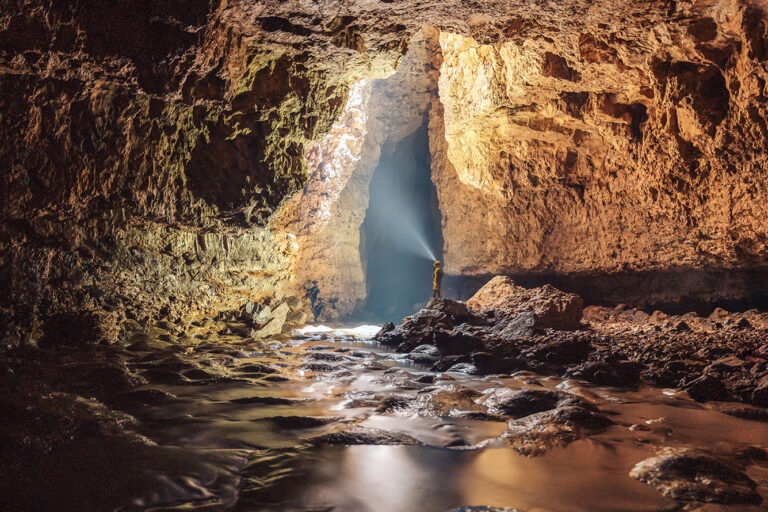- Acting on an order of the National Green Tribunal, India’s environment ministry has suggested measures to regulate groundwater use in the agriculture sector.
- It has recommended registering of borewells across the country and use of treated sewage for agriculture use.
- The report by environment ministry-led expert panel also suggests that projects coming up in areas where groundwater is already overexploited should not get environment clearance.
- A long-term, 50-year plan has been proposed by the panel, to handle the groundwater situation in the country.
The over-withdrawal of groundwater for agriculture is estimated to be one of the reasons that groundwater is a fast-depleting resource in India. Now, an expert committee of the government’s environment ministry has suggested measures to curb the exploitation of groundwater, including a tight regulation on overuse of water in the agriculture sector.
The committee has suggested registration and creation of inventories for borewells across the country, including recording details such as location and the withdrawal capacity, along with the size of the pipe. It has also suggested pooling of water for a common groundwater resource, by farmers, and making mandatory the use of treated sewage for agriculture in areas near urban centres or those having close proximity to sewage treatment plants.
The committee recommended that the environment ministry should not consider environmental clearances for new or expansion projects in areas where groundwater condition is already overexploited, critical or semi-critical (OCS). The committee also suggested that the National Water Board should meet at regular intervals – at least once a year – and address the groundwater needs of the country as a priority.
The recommendations were made by an expert committee on issues related to groundwater protection, conservation and regulation, which was constituted by the environment ministry as a response to a January 2019 order of the National Green Tribunal (NGT) in a case regarding the delicate situation of groundwater in the country. The committee’s report was recently submitted to the tribunal.
Conservation of water is also in line with Indian government’s international commitments as, in 2015, it agreed to the United Nations Sustainable Development Goal of access to clean water, decent sanitation and good hygiene for everyone by 2030.
Factors such as increasing population, growing urbanisation and rapid industrialisation, along with the need for raising agricultural production is putting a dangerous amount of pressure on India’s water resources. Already, the report noted, India is the largest groundwater user in the world with an estimated usage of 230 cubic kilometres per year, which is more than a quarter of the global groundwater use.
“From millions of private wells, rapid exploitation of groundwater has been observed in the last five decades resulting in consequential aquifer depletion. Climate change will put additional stress on groundwater resources while it will have an unpredictable impact on groundwater recharge and availability,” the report said.
Out of total available of 253 billion cubic meters (BCM) of groundwater in India, domestic and industrial uses accounts for 24.76 BCM (9.8 percent) while water for agriculture (irrigation) alone consumes 228.3 BCM (about 90 percent), notes the report.
As on March 31, 2013, a total of 6,584 units (blocks/mandals/talukas) across India were assessed for groundwater levels and of those, 1,968 – around 30 percent – were recorded as overexploited, critical and semi-critical areas.
The report stressed that areas, where groundwater is overexploited, should be declared as notified areas for protection and conservation of groundwater as notification would ensure a “ban on extraction of groundwater for new/expansion projects other than drinking purposes.”
Read more: Green court pushes government for action on groundwater regulation
Check groundwater use in the agriculture sector
In its recommendation for registration of borewells across the country, the report suggested using a mobile application where information of location and withdrawal capacity with the size of pipe will be filed for inventory. “User-friendly mobile app for farmers needs to be developed as it involves massive works … it may be planned in a phased manner by giving priority to OCS areas first by 2022,” the report said.
The report highlighted that the state governments need to play an important role in reducing the freshwater conveyance to canal and distribution networks so that necessary flow could be maintained in rivers. “This would also help in maintaining environmental flow in rivers through such water conservation measures for irrigation practices. Ministry of Jal Shakti may provide financial support to make effective canal conveyance system,” it suggested.
The report even recommended that “water-intensive cash crops in OCS areas may be discouraged or discontinued” by the agriculture ministry with the active involvement of the state governments. For instance, if this recommendation is implemented, sugarcane crop in water-stressed areas of Maharashtra may not continue. However, with various interests, including political involvement in the country’s agricultural sector, implementing this recommendation could find resistance.

The report further said that “ it should be made mandatory that every single village/multi-village scheme using groundwater as a source should compulsorily have either a point recharge provision or groundwater recharge structures for sustaining the water supply to rural areas.”
“Use of groundwater needs to be regulated in the agriculture sector but I don’t agree that 90 percent of India’s groundwater (as per the report) is used in this sector. It’s a false figure. The other concern is that no one is talking about water consumption in urban areas. We need a water audit first. In the dryland areas, the common sense tells us that we grow crops that need less water but unfortunately in such regions, we grow hybrid crops that require more water,” Devinder Sharma, an agriculture policy expert, told Mongabay-India.
Read more: Punjab’s groundwater stress drowns in election noise
Hope runs dry as groundwater sources in Punjab drop to alarming levels
In June 2018, a report by the Indian government’s think tank NITI Aayog highlighted that India is facing one of its worst water crises ever with nearly 600 million people facing high to extreme water stress.
Don’t grant environment clearances in water-stressed areas
The expert committee also discussed the environment clearance process and observed that, at present, there are no specific restrictions being imposed for industry, mining, infrastructure, power plant seeking environment clearance while proposing to use groundwater in the OCS areas. The panel recommended that the MoEFCC consider this aspect when granting environmental clearances to such projects.
The committee held discussions with industry representatives wherein they have proposed a water conservation fee (WCF) to regulate groundwater extraction. The report noted that during the meetings it was suggested to incentivise the charges if the industry promotes the practice of recycling and re-use of treated effluent and conserve the water by possible recharging methods.
Noida-based environmentalist Vikrant Tongad said the guidelines proposed by the MoEFCC led committee are not very different from the previous ones suggested by the CGWA.
“We do not agree with these. The groundwater condition is very critical in India now. We have to control the groundwater exploitation and focus on the reuse of water in all sectors. These draft guidelines focus on water conservation fee (WCF) only, but groundwater exploitation cannot be allowed by taking money (WCF),” Tongad told Mongabay-India.
The report also discussed that large scale residential, commercial complex and infrastructure projects are normally setup within and the vicinity of urban areas. “It requires a huge quantity of water during the construction stage as well as for consumptive uses. Permission to use groundwater shall not be considered particularly in OCS areas except drinking purpose. However, options of surface water and use of treated sewage (upto tertiary treatment) needs to be explored for the construction of infrastructure,” the report suggested.
It recommended that projects, where groundwater abstraction is more than 500 cubic metre per day, must have a provision of impact assessment on the ambient groundwater regime both quality and quantity-wise.
It further stated that the union ministry of mines in collaboration with state departments may workout wise use of water from dewatering operations from mining activity so that it can be considered for supply to nearby communities. “Funds in this regard shall be earmarked from their CSR (corporate social responsibility) provisions. The miners should prioritise this aspect in their environmental management plan,” the report said.
It further recommended the development of a surveillance system to identify illegal groundwater extraction similar to the system used for stopping illegal mining by the ministry of mines.
Read more: Usable groundwater depleting in east India despite increasing rainfall, finds study
As Kolkata’s groundwater level depletes, consequences go beyond water shortage
Regulate water use in urban areas
As far as overexploited, critical or semi-critical areas are concerned, the report said, the groundwater extraction for drinking and domestic needs to get a priority.
The committee emphasised in urban areas water supply though government water supply agencies is a major component of abstraction of groundwater.
“Presently, no applications for taking permission by municipal authorities/ boards are submitted to CGWA. This needs to be regulated … It will help in reducing wastages and augmenting the groundwater through recharge. It will also help the local bodies to commit water to users based on the actual availability of the resource rather on the capability of the distribution network and to plan the supply network matching with the groundwater resource in the area,” it said.
Another recommendation of the committee was that individual households should in no case be permitted to use mechanised and energised means of abstraction of groundwater within the jurisdiction of local bodies which has ensured water supply to individuals through the piped system.
“Municipality in this regard be empowered to check and disallow the groundwater extraction once the pipe water supply is provided by them,” the report said.
In urban areas, the committee said, it has been noticed that a large quantity of water is being wasted from the overflow of overhead tanks.
“In order to have water conservation in urban areas, overflow from overhead storage tanks of individual houses/establishment should be prevented with the mandatory condition of providing electronic alarm and a provision of automatic shutdown of motor used for pumping of groundwater,” said the report.

For mobilising financial resources, the expert panel said the state governments may consider tapping non-governmental organisations, corporate houses, religious trusts, social groups for a watershed programme for the groundwater recharge and augmenting water.
“A system of incentives could also be worked out for agencies and industries using treated wastewaters for various legitimate purposes and implementing rain harvesting measures by individuals,” it said.
Plan for the next 50 years
The National Green Tribunal had asked the committee to form a 50-year-plan for the groundwater situation in the country. On that, the committee noted that the total water demand is likely to reach 1,180 BCM against the per capita availability of water which is expected to be less than 1,000 BCM by the year 2025.
By 2030, the panel suggested a complete aquifer mapping of the country, preparation of water security policy, complete shift from block-wise groundwater assessment to aquifer-wise assessment, setting up of groundwater departments in states (by 2022), feasible adoption of drip and sprinkler irrigation techniques (by 2025) and setting up of a bureau of water efficiency (by 2023) etc. By 2040, it said that steps should be taken for mapping of the catchment, delineation, and protection of springs, implementation of mega recharge project for water-stressed areas among other things.
Read more: India’s water commission suggests rewards and punishment to encourage water conservation
Fine those dumping waste into water bodies, says pollution watchdog
The action plan suggested by the panel for 2050 included establishing of 250,000 groundwater monitoring stations (one per 10 square kilometres), assessment of saline groundwater resources, plan to prevent seawater ingress, guidelines for maintenance of groundwater level in and around wetlands, guidelines for the protection of groundwater quality in and around landfill sites and monitoring of anthropogenic contaminants in groundwater like heavy metals, pharmaceuticals, and personal care products.
The panel said that by 2060 the country should look at finding fresh groundwater in offshore areas and consider studying groundwater microbiology. While the 2070 action plan should include the development of a methodology for drought alert based on groundwater levels, development of artificial intelligence-based decision support system for groundwater management and study of transboundary aquifers both on the interstate as well as international level.
Banner Image: An expert panel led by union environment ministry has suggested measures to address the groundwater stress in rural as well as urban areas. Photo by Achuthan K.V./Wikimedia Commons.













